Course:FNH200/2012w Team17 GreenTea
Tea is one of the most consumed beverages worldwide today after water, with an estimate of around eighteen to twenty billion cups consumed per day. There exist three different kinds of teas, commonly known as green tea, oolong tea, and black tea.[1] The difference in these teas lies in the oxidation and fermentation of the tea leaves. Green tea leaves are non-oxidized/fermented, oolong tea leaves are semi-oxidized/fermented, and black tea leaves are fully oxidized.[1]
Green tea, also known as Camellia Sinesis, originated in China in 2700 BC and has been consumed as both a beverage and medicine ever since. While China and Japan remain to be some of the largest tea producers in the world, they are also known as some of the largest importers as well, more specifically Japan being eighth largest importer in the world.[1] This means that other countries have begun to produce and export green tea in mass quantities. What are the reasons for this massive boom in green tea production? Could it be the new technologies in production, packing, and storage of the product that allows countries to produce this product in substantial amounts? Or is it the wide variety of health benefits that come along with this product? We will investigate all these aspects of the green tea market from the history of green tea to the new production methods used today. We will also explore the pros and cons of loose-leaf versus bagged tea, as well as the regulation and standards that come along with the production of green tea.
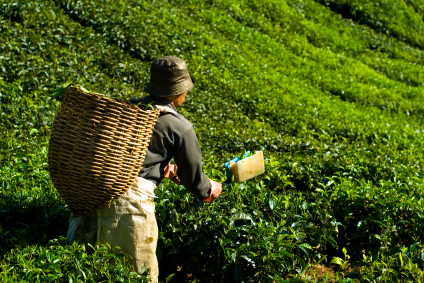
History
Origins
The earliest record of tea use dates back to tenth century BC in China, during the Shang dynasty.[2] However, tea may be consumed as early as 2700 BC as its discovery is credited to the legendary Chinese emperor Shennong (神農) in folklore.[3] Tea also served for medicinal purposes dating back to 3rd century AD[3] where it was described by the famous ancient Chinese physician Hua Tuo (華佗) to have the ability to improve mental functions. In 6th century BC, tea was introduced to Japan by monks and has since become the drink of choice for the Japanese.
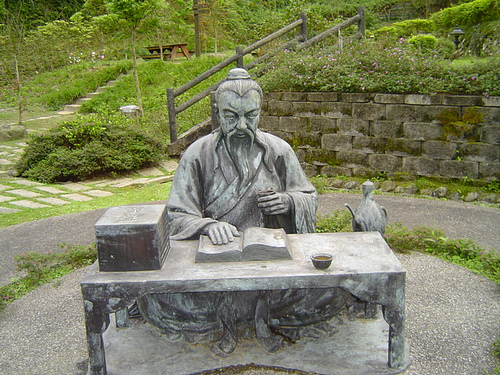
During the Tang Dynasty, the writer Lu Yu (陸羽) wrote a treatise on the subject of tea called “Cha Jing” (茶經), or tea classic. The text describes all aspects of tea, including the growing, processing, brewing and purchasing of tea.[3] Tea in this time was mainly produced in the form of a tea brick, which was often used as currency in rural areas, a policy later adapted by other countries, including Siberia, where it was still accepted as currency as recently as 20th century.[4]
Role in Chinese-British Relations
Tea was first introduced to Europeans in the 1600’s through Portuguese merchants trading with China.[5] It was through the Portuguese that tea was first introduced to the British. At first tea was only available to the nobility, but by the mid-18th century, it had become the most popular drink in Britain.[5] The increased demand however, caused the Chinese to demand silver for tea leaves. In order for the British to pay for the costly tea, they began to increase their exports of opium.[6] Since the Chinese government was not fond of the effects of opium on the Chinese population, opium was banned; this would eventually lead to the Opium wars in the 19th century. [6]
Loose Leaf Green Tea

Processing
Loose leaf green tea production is a very straightforward process that consists of only a few main steps. First, the leaves are harvested; then, leaves are dried; finally, leaves are shaped and packaged.
In order to produce the highest quality tea leaves, the Camellia sinensis plant, or tea shrub, must be grown under ideal conditions. These conditions include having a minimum of 1143-1270 mm of rainfall annually. Secondly, the soil the shrub is planted in must be mildly acidic (pH 5.4-5.8). The tea shrub is unable to grow under alkaline, or basic, conditions.[7]
Starting in April or May, high quality loose leaf green tea is hand plucked from the young buds of the tea shrub. The highest quality tea leaves are hand pluck whereas lower grade teas are machine plucked. After 70-90 days, the shrubs are able to be plucked again as new buds will grow. [7] This 70-90 day period, the harvest interval, is continued until late September where the last harvest will be collected. After the leaves are plucked, the leaves are placed in a storage container waiting to be processed. Because not all the leaves can be processed at one time, the leaves are kept at a proper temperature by blowing cool air into the bottom of the storage container.[7]
Green tea leaves are dried to prevent fermentation.[7] This process stops enzyme activity and prevents oxidation. In China, the drying process of the tea leaves consists of using a large wok over a flame. The leaves must be constantly stirred to ensure even drying. Once the leaves are pan-fried, the leaves can be placed in the sun on bamboo or in a storage container where warm air in both situations further ensure drying. This process is called withering.[7] Again, stirring must be done constantly to ensure even drying. Before the next step professionals touch the leaves to ensure that they feel “just right”.
One of the last steps in green tea processing is shaping. The most common way to shape dried tea leaves is to use a machine. The highest grade loose leaf green tea is hand rolled. Professionals roll the tea leaves into curly, twisted, pointed, or round shapes.[7] Rolling creates a distinctive look that consumers want, and aids in the regulation in the release of natural substances when steeped. The green tea leaves are then packaged, but a maximum moisture content of 5% must be complied.[7]
Packaging and Storage
Loose leaf green tea should be stored in air-tight or vacuum-sealed containers because light and moisture can make big impact on the quality of loose leaf tea. The packaging coated with aluminum foil is ideal for loose leaf. To separate tea leaves from the drink, tea pots, strainers, and infusion bags can be used. Proper packaging and storing prevent the degradation of taste, aroma and nutrients.[8][9]
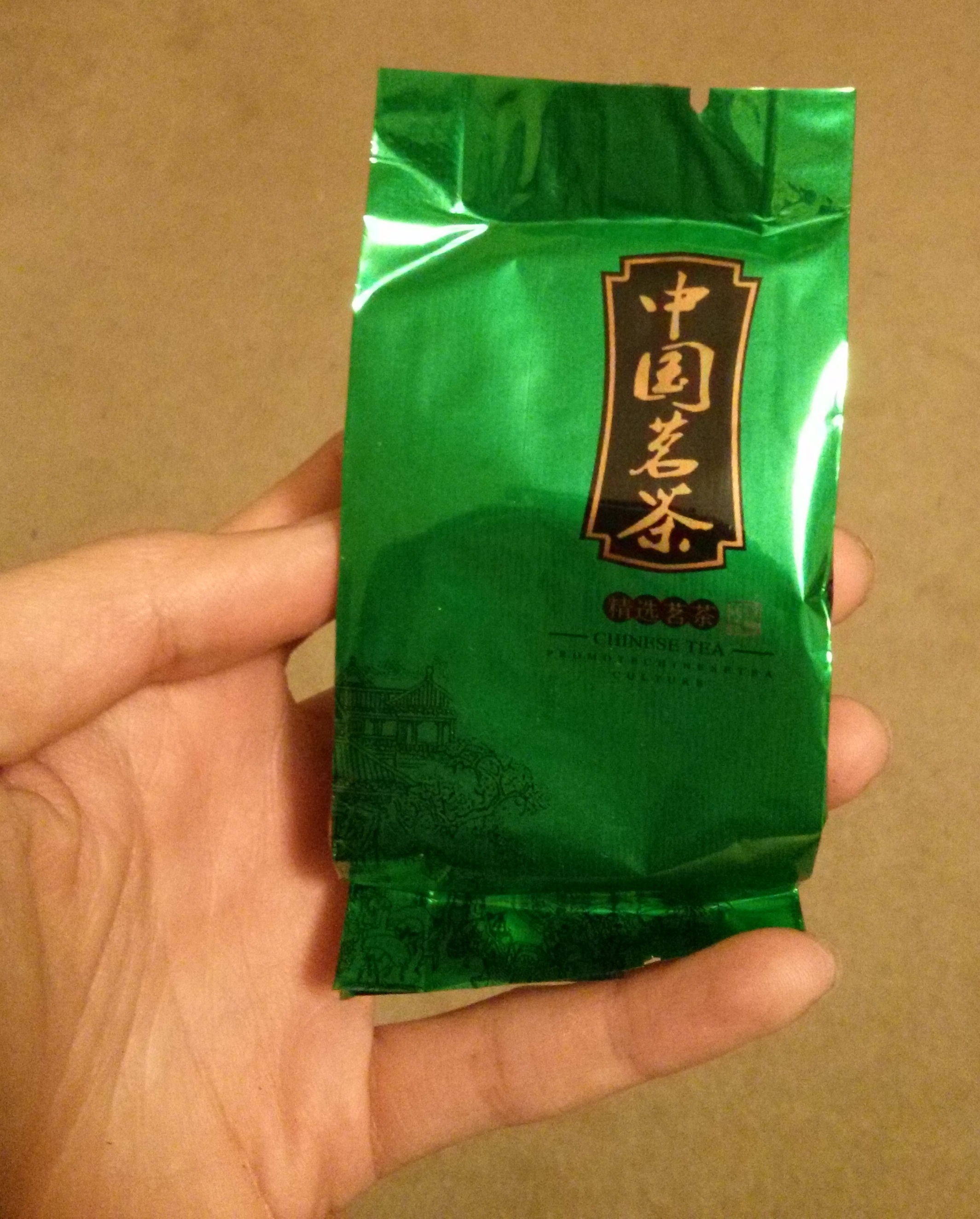
There are five key elements that affects green tea storage: heat, light, moisture, oxygen and odors. [10]
- High heat quickens chemical process and causes the compounds in green tea to go stale faster. Storing leaves in a cool place or fridge will help it keep the aroma, taste and quality of tea leaves.[10][11]
- Strong light generates heat and causes the oxidation and decomposition of tea leaves. It is crucial to keep the leaves in a non-transparent container in a place without any light.[10][11]
- Green tea leaves easily absorb moisture in the air. The increase of moisture level causes mold growth, fast oxidation, resulting in rapid degradation. For this reason, tea should be stored in an air-tight container.[10][11]
- Green tea compounds are likely to react with oxygen in the air. Minimal oxidation is important to preserve its taste, quality as well as preventing color change. Storing in an air-tight container is recommended.[10][11]
- Green tea leaves can absorb odors from the surroundings. To keep its own smell, tea should be sealed tightly in a non-transparent pack and kept away from other tea or foods.[10][11]
Vacuum seal, refrigeration, desiccants and oxygen absorber can be used to extend the durability of green tea even more.[10]
- When tea is vacuum sealed, most of the air and oxygen are taken out from the package. An opaque, non-penetrable packaging keeps teas from being exposed to light, oxygen, odors and moisture in the atmosphere.[10]
- Desiccants absorb moisture and oxygen absorbers take in oxygen. They work better in an impermeable container.[10]
- Refrigerator is the most useful appliance to extend the life of tea. Green tea can be stored with a maximum stay of 12 months in refrigerator, whereas it loses the taste and odor within 2-3 months by oxidation at room temperature.[10]
Brewing
To brew that perfect cup of green tea, these steps should be taken:
- Use loose tea leaves as it is easier to control the flavor that seeps into the tea. Traditionally, you should use five grams of tea leaf for per cup of tea you wish to prepare. Make sure a strainer is used so the tea leaves do not get into the drink.[12]
- Use water that is approximately 80°C. Boiling water will cause tannins to diffuse from the tea leaf into the tea, causing the resulting brew to be bitter.[13]
- The flavor needs time to diffuse into the liquid. However, if the tea leaves is left for too long, the drink may taste bitter. Therefore the best time to allow for steeping is two to three minutes.[12]
Green Tea Tea Bags
Processing
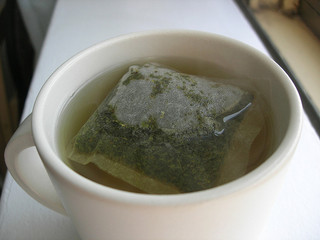
Tea bags are usually made from low quality teas which are leftovers from loose leaf tea. Loose leaf tea are chopped into smaller pieces to fill the bags, so tea becomes less flavorful and less aromatic. Most tea bags are wrapped with paper and packed in a paper box. Many papers are made of epichlorohydrin,which is also used in the production of plastics. Brewing tea bags is easy and convenient.[8][9]
Disadvantages of Tea Bags
The question everyone always seems to ask is what is the difference in consuming loose leaf green tea versus processed green tea bags. Let us explore the differences.
- When tea bags are made, the process begins with leaves being chopped up into very small pieces from around 0.2 to 1.5 millimeters. This process is called fanning and dusts.[14]
- These particles are then placed into a small paper pouch and are ready to be consumed by purchasing costumers.[14]
- Green tea, as you should already know from the introduction, means un-oxidized tea leaves. This means that the leaves contain many nutrients including catechins, theanine, chlorophyll and Vitamin C.[14] With smaller particles due to cutting of the leaves, the leaves are more exposed to moisture and oxygen, leading to immense loss of these nutrients via oxidation, which causes immense loss of quality.[14]
- Another disadvantage of the smaller pieces is that the caffeine particles can escape the tea leaves much quicker, leading to a more bitter flavor in the tea.[14]
- Also, most tea bags are produced with a certain type of green tea leave called a CTC leave. CTC stands for crush, tear, and curl, and this process is usually only used with low quality leaves.[14]
- The process is very simple; machines compress leaves together, forcing out most nutrients in the form of sap. The leaves are then chopped or torn, curled into a tight ball and fired or dehydrated as a preservation step.[14]
- Essentially, you are getting the “left-over” tea that would have been thrown out, extremely processed into a tea bag.[14]
- Fresh green tea on the other hand is handpicked with extreme care by special tea artisans who have a great deal of experience in their field of work.[15]
- Furthermore, loose leaf tea is picked at peak age of the tea leaves, while tea bag tea leaves are the leaves that have been left over and have had a little too much time to grow.[15]
- This is important because the young tea leaves are the ones with the highest levels of antioxidants, the particles that provide most health benefits from green tea.[15]
Conclusion: If you want a tea that’s easily stored and very convenient to prepare and drink, your best bet is to get green tea in the form of a tea bag. However, you will be missing out on the true experience of green tea tasting, as the aromas and flavors of true authentic green tea can only be sampled with fresh, handpicked green tea leaves.[14]
Standards and Regulations
Standard of Identity
The sale of green tea is regulated by the Canadian Food Inspection Agency (CFIA).[16] It is one of the many foods for which a standard of identity is specified according to the Food and Drug Regulations in Division 20:
B.20.004. [S]. Green Tea shall contain, on the dry basis, not less than 33 per cent water-soluble extractive, as determined by official method FO-37, Determination of Water-Soluble Extractive in Tea, October 15, 1981, and not less than four per cent and not more than seven per cent total ash.[17]
Labeling
Many green tea packages also claim to be decaffeinated, for which the following standards must be met according to the Food and Drug Regulations in Division 20:
B.20.005. [S]. Decaffeinated (indicating the type of tea)
- (a) shall be tea of the type indicated, from which caffeine has been removed and that, as a result of the removal, contains not more than 0.4 per cent caffeine; and
- (b) may have been decaffeinated by means of extraction solvents set out in Table XV to Division 16.
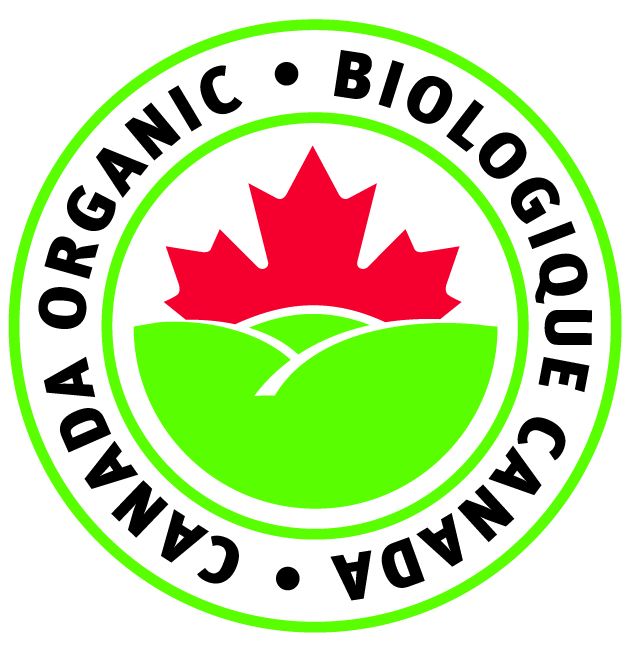
Another claim green tea packages can have is claiming the product is organic. For a product to be labelled as organic it must comply with the requirements set by CFIA in the Organic Products Requirements which were put into place since June 30, 2009.[18] These requirements are as followed:
- Only products with organic content that is greater than or equal to 95% may be labelled as: "Organic" or bear the organic logo.[18]
- Multi-ingredient products with 70-95% organic content may have the declaration: "contains x% organic ingredients." These products may not use the organic logo and/or the claim "Organic".
- Multi-ingredient products with less than 70% organic content may only contain organic claims in the product's ingredient list. These products may not use the organic logo.
The name of the organization that certified the product as being organic must also be on the label.[18] Certification bodies can be found here:
Along with meeting the aforementioned requirements, the product must also comply with the provincial regulations of the province it is being sold in. So far, only British Columbia and Quebec have their own set of regulations.[18]
CFIA further monitors the labeling and packaging requirements of green tea, assuring that all labelling requirements and claims are adhered to and not misleading to the consumer.[19]
The guidelines for these regulations can be found on the CFIA website:
Import Regulations
Due to Canada’s climatic restrictions, green tea is typically imported in from other countries. All imported green tea products must also comply with all of the above mentioned requirements, and specifically label that it is a “product of” or “imported from” whichever country it is originated from.[18]
Health Benefits
Many studies done in the previous decade indicates that green tea may have many health benefits including a potential to prevent cancer and heart disease. Furthermore, some studies have shown that green tea may play a role in lowering cholesterol, preventing diabetes and burning fat.[20][21][22]
Cancer Prevention
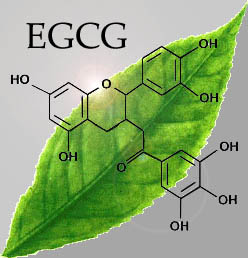
Green tea contains a family of antioxidants called catechins, which neutralize free radicals that damages DNA.[23] DNA damage can lead to cancer, blood clots and atherosclerosis, or the loss of elasticity of blood vessels.[20] As green tea is unfermented, the catechins present in the tea leaves; especially a catechin called epigallocatechine-3-gallate (EGCG) remains in high concentrations. EGCG has been shown to shrink prostate cancer tumors in mice, but there is insufficient evidence to show that the same is true for humans.[23] However, a study in Japan involving women with breast cancer indicates that the consumption of green tea is correlated with a lower rates of the cancer relapse.[20] Furthermore, studies in China have shown that high levels of green tea consumption correlated to a lower risk or stomach, esophageal, prostate, pancreatic and colorectal cancer.[21] Perhaps most interesting is an analysis done on 22 previous studies showing that increasing the consumption of green tea by 2 cups daily reduces the risk of lung cancer by 18%[20], but the consumption of black tea may not have the same effect as green tea has a much more potent antioxidant activity compared to black or oolong tea.
Prevention of Heart Disease
Studies have also shown that drinking at least four cups of green tea daily can reduce the severity of major coronary heart disease in the male subjects and that the amount of green tea consumed is correlated to reduced amounts of arterial plaque that clog up blood vessels.[22] These observations are also like due to the antioxidants present in green tea as these chemicals are vasodilators which increase the flexibility of blood vessels, making them more resilient to clogging.[20] Antioxidants found in blueberries and pomegranates reduce to risk of coronary heart disease in a similar fashion as well.
Oral Health
Besides having a great taste, green tea can do even more for your mouth. Chemicals in green tea have the ability to fight infection as well as control unwanted inflammation.[24] A recent study done in Egypt indicated that rinsing your mouth with green tea for five minutes reduced the number of bacteria and acid level in their mouths, so green tea may be useful for preventing cavities.[24] Furthermore, the anti-inflammatory activity of green tea components can prevent gum diseases such as gingivitis.[24] A study done in Japan showed that regular consumers of green tea had healthier gums than non-consumers. Lastly, green tea's antimicrobial activity may kill bacteria that releases chemicals which make our breath stink. [24] A study done in 2008 at the University of British Columbia showed that green tea reduced the level of vile smelling compounds in the mouth more so than chewing gum and mints. [25]
Nutritional Value
Green tea is over 99% water and since we do not add milk or sugar to green tea like we would for black tea, it contributes a negligible number of calories to our diet.[26][27] However green tea contains many essential vitamins (A, C, D, E, B, B5, H and K) and minerals (Manganese, Zinc, Chromium, and Selenium). [26] [27] Furthermore, green tea is an excellent source of antioxidants and alkaloids but has a very low caffeine content, making it safe for pregnant women to consume. [26] Lastly since green tea is mostly water, it is an excellent beverage for body hydration.[26]
Conclusion
Since its discovery, green tea has been gaining popularity in the western world for some time now. Its numerous health benefits including its role as an antioxidant is one of the main forces behind the increasing consumption of green tea. While many opt to use green tea tea bags over loose leaf green tea, it is crucial that they understand the pros and cons of both. While more processing is necessary in the production of the tea bags, which results in the loss of some of its positive features, its convenience is what lures consumers to choose it over loose leaf tea. We urge those who do consume green tea to consider if the convenience of a tea bag outweighs the numerous health benefits which are preserved in the processing of loose leaf green tea.
Quiz
1. What is the purpose of the aluminum layer in the packaging of loose leaf green tea.
- (a) to prevent oxygen from entering the package, preventing oxidation
- (b) to prevent light from entering the package, preventing oxidation
- (c) to prevent moisture from entering the package, preventing loss of quality
- (d) to prevent odors that come from volatile fatty acids to enter the tea leaves
- (a) to prevent oxygen from entering the package, preventing oxidation
2. In Canada, what does it mean when green tea is "decaffeinated".
- (a) caffeine has been removed there is no caffeine in the product as a result.
- (b) caffeine has been removed so there is less than 5mg of caffeine per serving as a result.
- (c) caffeine has been removed so the product contains 50% less caffeine than the caffeinated product.
- (d) caffeine has been removed and the product contains less than 0.4% caffeine as a result.
- (a) caffeine has been removed there is no caffeine in the product as a result.
3. Green tea contains antioxidants called ________ that neutralize free radicals, stopping DNA damage. This process prevents certain types of diseases including:
- (a) Thiamine; Certain types of cancers and heart disease
- (b) Catechins; Certain types of cancers and skin diseases such as acne vulgaris
- (c) Catechins; Certain types of cancers and heart disease
- (d) Thiamine; Heart disease and respiratory tract infections
- (a) Thiamine; Certain types of cancers and heart disease
Answers:
1. b - Aluminum is opaque which prevents light from entering the transparent plastic. Light induces oxidation of volatile fatty acids, antioxidants and vitamins.
2. d - What can be labeled as decaffeinated is defined by the Food and Drug Regulations in Division 20.
3. c - Catechins are antioxidants which can protect against DNA damage which causes cancer. It is also a vasodilator which increases the flexibility of blood vessels, decreasing the risk of heart disease.
References
- ↑ 1.0 1.1 1.2 Golding, John, Paul Roach, and Sophie Parks. Production of High Quality Export Green Tea through Integrated Management. Barton, A.C.T.: RIRDC, 2009. Print.
- ↑ Tea. http://web.archive.org/web/20080308234307/encarta.msn.com/encyclopedia_761563182/Tea.html. (2008). Retrieved on 19 March, 2013
- ↑ 3.0 3.1 3.2 Chinese Tea. http://www.viconyteas.com/directory/tea-encyclopedia/chinese-tea.html. (n.d.) Retrieved on 17 March 2013.
- ↑ Valérie Pede. Tea: not only a drink, but also a means of payment. http://www.nbbmuseum.be/2009/08/teabrick.htm. (2009). Retrieved on 20 March, 2013.
- ↑ 5.0 5.1 The History Of Tea. http://www.wtea.com/about-tea_history.aspx. (n.d.) Retrieved on 23 March, 2013
- ↑ 6.0 6.1 James Norwood Pratt. Trading Tea for Opium. http://www.teamuse.com/article_010502.html. (n.d.) Retrieved on 21 March, 2013
- ↑ 7.0 7.1 7.2 7.3 7.4 7.5 7.6 Green Tea.http://www.madehow.com/Volume-5/Green-Tea.html. (n.d.) Retrieved on 18 March, 2013
- ↑ 8.0 8.1 Teabags vs. Loose Leaf Tea - Why is loose leaf tea better than teabags? About. http://coffeetea.about.com/od/teaandtisanebasics/a/TeabagsVsLeafTea.htm. Retrieved on 22 March, 2013
- ↑ 9.0 9.1 History of the tea bag. Learn about tea. http://www.learn-about-tea.com/tea-bag-history.html. Retrieved on 22 March, 2013
- ↑ 10.00 10.01 10.02 10.03 10.04 10.05 10.06 10.07 10.08 10.09 How to Store Green Tea. Peony. https://www.peonyts.com/how-to-store-green-tea/. Retrieved on 22 March, 2013
- ↑ 11.0 11.1 11.2 11.3 11.4 Green Tea Storage Guarding Against Five Thieves. Amazing Green Tea. http://www.amazing-green-tea.com/green-tea-storage.html. Retrieved on 22 March, 2013
- ↑ 12.0 12.1 How to Prepare Green Tea. http://www.greenteabase.com/how-to-prepare-green-tea. (n.d.) Retrieved on 25 March, 2013.
- ↑ Green Tea Brewing Tips. http://www.thefragrantleaf.com/green-tea-brewing-tips. (n.d.) Retrieved on 25 March, 2013.
- ↑ 14.0 14.1 14.2 14.3 14.4 14.5 14.6 14.7 14.8 Julian. "Loose Green Tea Versus Tea Bag 7 Reasons Why It's Better." Loose Green Tea Versus Tea Bag. Amazing Green Tea, n.d. Web. 21 Mar. 2013.
- ↑ 15.0 15.1 15.2 "Learn About Tea -- Disadvantages of Tea Bags." Learn About Tea -- Disadvantages of Tea Bags. N.p., n.d. Web. 21 Mar. 2013.
- ↑ Canadian Food Inspection Agency. Science and regulation… working together for Canadians (2010) http://www.inspection.gc.ca/english/agen/broch/broche.shtml Retrieved on 22 March, 2013
- ↑ Department of Justice. Food and Drug Regulations (2013) http://laws.justice.gc.ca/eng/regulations/C.R.C.,_c._870/page-166.html#h-116 Retrieved on 22 March, 2013
- ↑ 18.0 18.1 18.2 18.3 18.4 Canadian Food Inspection Agency. Canada Organic Regime: A Certified Choice (2012) http://www.inspection.gc.ca/food/organic-products/labelling-and-general-information/certified-choice/eng/1328082717777/1328082783032 Retrieved on 22 March, 2013
- ↑ Agriculture and Agri-Food Canada. The Canadian Tea Industry (2011) http://www4.agr.gc.ca/AAFC-AAC/display-afficher.do?id=1298047470064&lang=eng Retrieved on 22 March, 2013
- ↑ 20.0 20.1 20.2 20.3 20.4 Green tea Health Benefits. Julie Edgar. http://www.webmd.com/food-recipes/features/health-benefits-of-green-tea Retrieved on 18 March, 2013
- ↑ 21.0 21.1 Yang CS, Wang X, Lu G, Picinich SC (2009) Cancer prevention by tea: animal studies, molecular mechanisms and human relevance. Nat Rev Cancer 9: 429–439doi:10.1038/nrc2641. [PMC free article] [PubMed]
- ↑ 22.0 22.1 Auclair S, Milenkovic D, Besson C, Chauvet S, Gueux E, et al. (2009) Catechin reduces atherosclerotic lesion development in apo E-deficient mice: A transcriptomic study. Atherosclerosis 204: e21–e27doi:10.1016/j.atherosclerosis.2008.12.007. [PubMed]
- ↑ 23.0 23.1 Adhami VM, Ahmad N, Mukhtar H. Molecular targets for green tea in prostate cancer prevention. J Nutr. 2003;133:2417S–2424S. [PubMed]
- ↑ 24.0 24.1 24.2 24.3 Lisa Bendall. 5 ways green tea is good for your oral health. http://www.besthealthmag.ca/get-healthy/oral-health/5-ways-green-tea-is-good-for-your-oral-health. (2011). Retrieved on 25 March, 2013.
- ↑ Lodhia P, Yaegaki K, Khakbaznejad A, et al., Effect of Green Tea on Volatile Sulfur Compounds in Mouth Air, J Nutr Sci Vitaminol, 54;89-94, 2008.
- ↑ 26.0 26.1 26.2 26.3 Facts about Green Tea Nutrition and Benefits. http://www.greenteanutritionfacts.com. (n.d.) Retrieved on 26 March, 2013.
- ↑ 27.0 27.1 The Nutrition of Green Tea. http://www.fitday.com/fitness-articles/nutrition/healthy-eating/the-nutrition-of-green-tea.html. (n.d.) Retrieved on 26 March, 2013.